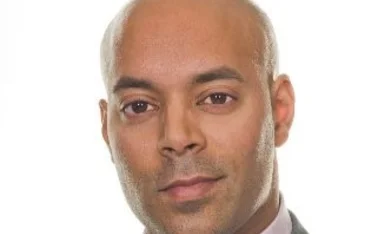
Briefing: Who is behind the mask?

Last week I wrote a strongly worded letter to my household emergency provider and a blog on this site detailing the issues I was having.
We left the tale a week (168 hours) after I’d first reported my emergency of no boiler, hot water and heating when I was waiting for yet another repair man (number three, from claims company number two). He was running late. He did, however, show up after several delays. He took his shoes off when he came in, and he fixed the system. By Friday evening we were all toasty warm and looking forward to baths.
That is not to say all the problems were resolved, however. Engineer number three was appalled to hear of how long we’d been without a system and set about working out exactly what had been done to my machine. Engineer number two, he agreed, had done a good job for his part – the point where the electricity no longer flowed into the boiler had been well identified and a good temporary fix applied. And yes this should always have been the starting point for the claim.
Engineer number one, however, drew his wrath. After hearing my story engineer number three went looking for my “two blue wires” and discovered them plugged into a high voltage point (they should not have been plugged in at all) he also noticed several broken parts (which would have been spotted on our annual service had they already been there) and shouldn’t have been left like that, along with a new water leak and some missing screws. A well trained boiler repair man should have left none of these, he said. In addition (and he got photographs to upload for his report) there was no way the part that had been paid for had actually been fitted. Some marks on the front of our system showed it was the original boiler parts in place when I had been told the whole front need to be updated.
Engineer number three noted all of this and informed me that he’d be reporting it. He also told me this claim should and could have been sorted on day one with just one visit. It is still the original parts in there after all and it is working again now. He has since ordered the extra parts needed and engineer number four has fitted one with one to be done today as a final fix. Claims company two has also been in touch several times since then (still no emails mind) and kept me up to date with what was happening.
Investigation
On Friday evening the loss adjuster called and confirmed there would be an investigation into my claim. It raises the question though about what service levels were in place for my insurer and loss adjuster. Why were there no red flags when the claim (a simple boiler fault) wasn’t resolved after five days? Why was it OK to allow a full 48-hours with no update from the original claims provider? How was engineer one vetted and recruited? Where did he get his training and where are the checks and measures? Where is the brand new boiler part my insurer had paid for and I paid to be fitted? And where does the buck stop?
I’ve had a bad experience with this home emergency claim. I see myself as well informed about insurance and often advise family members on policies but I’ve learnt a few lessons from this. For home emergencies this cover is not enough for us. The limit of £500 per claim won’t pay for when something big goes down, especially when labour costs are included. £250 in total is not enough to attempt to relocated a family of four for any period of time (Our local Holiday Inn is £105 during the week and much more on a weekend and that’s for one real bed and one pull out bed to sleep us all in one room).
As such I’m not sure this policy, which was an add on of sorts as I was upsold, was ever fit for purpose. When underwriting my household policy I was asked about my home so why wasn’t this also factored in? Add ons have been contentious before – maybe it’s time the market looked at these again?
Guess who
I knew who I was buying the ‘product’ from, but I had no idea where the service – surely the point of the cover – would come from. While the insurer was a well-known name, and I’m pretty sure I know most loss adjusters, it wasn’t enough. I’ve since looked at this loss adjuster’s online reviews and I’m not impressed. In addition, I had no idea of who the end provider was that would be on my doorstop – while I had heard of claims company one I did not know claims company two. This has shocked and appalled me and made me rethink how the system works.
Where else in the world would this happen? In an age where Amazon is king and customer service expectations are high would you want to pay top end prices for an item delivered by a substandard courier that arrived damaged beyond use by a rude delivery person, only for a replacement to not arrive, and for a second replacement to arrive late? And all along the way you were stuck dealing with the difficult courier – which was subcontracting the jobs out to smaller companies that were messing up the deliveries – without much if any help from the retailer whose product you were meant to have bought.
How would a brand like Harrods fare with their customers in such a situation?
When you buy a mini you know its owned by BMW but would you be happy buying a BMW made by Mini? John Lewis’ dropped household ad raises this point to an extent. Despite the ad being made by John Lewis the Financial Conduct Authority ordered underwriter Munich Re Digital Partners to get it pulled. Yet the national press and indeed the household customers don’t know this.
How are customers expected to make informed choices about cover when all these details are hidden in the fine print? The sector’s reputation is at a low. If you really are all partners delivering these services, isn’t it time the end customers knew? Or do they have to wait for an experience like mine before they see the real bones of the industry?
Only users who have a paid subscription or are part of a corporate subscription are able to print or copy content.
To access these options, along with all other subscription benefits, please contact info@postonline.co.uk or view our subscription options here: http://subscriptions.postonline.co.uk/subscribe
You are currently unable to print this content. Please contact info@postonline.co.uk to find out more.
You are currently unable to copy this content. Please contact info@postonline.co.uk to find out more.
Copyright Infopro Digital Limited. All rights reserved.
You may share this content using our article tools. Printing this content is for the sole use of the Authorised User (named subscriber), as outlined in our terms and conditions - https://www.infopro-insight.com/terms-conditions/insight-subscriptions/
If you would like to purchase additional rights please email info@postonline.co.uk
Copyright Infopro Digital Limited. All rights reserved.
You may share this content using our article tools. Copying this content is for the sole use of the Authorised User (named subscriber), as outlined in our terms and conditions - https://www.infopro-insight.com/terms-conditions/insight-subscriptions/
If you would like to purchase additional rights please email info@postonline.co.uk
Most read
- Movers and shakers who made Insurance Post’s Power List 2024 revealed
- Has the Biba Conference shed its ‘Butlin’s for Brokers’ reputation?
- Former colleagues pay tribute to David Sweeney








